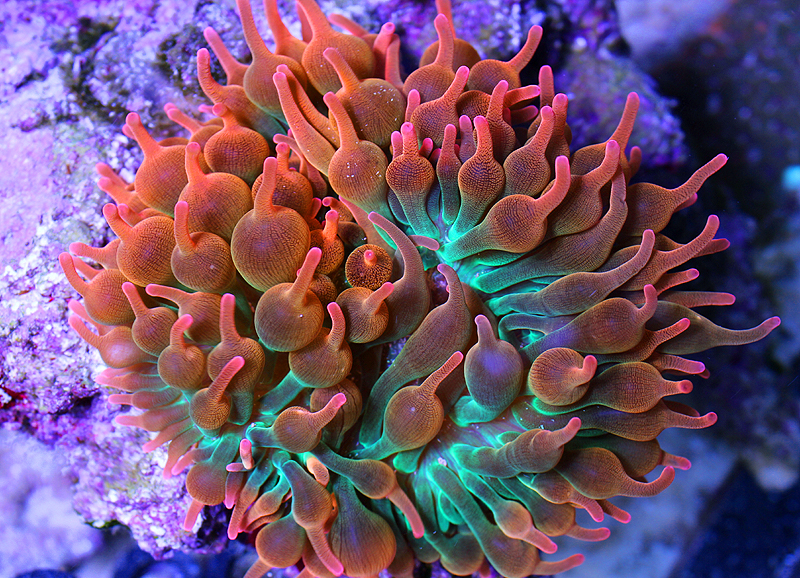
Photo by areefcreation.com
Anemones can reproduce either asexually or sexually, and each method of reproduction has distinct advantages and disadvantages. With asexual reproduction, the offspring are genetically identical to the original parent. Asexual reproduction allows for larger numbers of individual offspring to be produced more quickly with less energy expenditure as compared to sexual reproduction; in stable marine environments this is a reliable, efficient and effective means of reproduction. However, this lack of genetic diversity in offspring could collapse an entire population of genetically identical animals if environmental pressures were to swing too far from tolerable conditions. On the other hand, rapid rates of asexual reproduction allows for faster responses to environmental pressures as they are occurring and could raise the rate of survival if individual offspring develop genetic mutations during mitosis.
During sexual reproduction, sea anemones release genetic material (gametes) through the oral disk. With many species of sea anemones, genetic material from two or more distinct species are released into the water whereby sperm and egg will connect with the possibility of producing a genetically different and unique offspring from both parents. The genetic differences among multiple offspring increases the probability of survival.
The method of reproduction typically observed by aquarium hobbyists in the tank is known as fission, a form of asexual reproduction. Fission (or binary fission) is when an organism splits into 2 separate individuals. It is believed that when an anemone reaches a certain size the likelihood of fission increases; it is also believed that environmental stressors may increase the chances for fission.
MORE








I was told that sea anemones use budding as their form of asexual reproduction. I have researched this and the majority of the websites say budding not binary fission.
U wrong, I am always right BOY.
GET BACK TO MY HOUSE,
NO JOE IS ALWAYS RIGHT. BOBBY LIL BRO GO BACK TO THE HOUSE
NO BILLY IS ALWAYS RIGHT! SIT DOWN AND PLAY SOME FORTNITE! BILLY OWNS YOU TWO!
NO TIMMY OWNS ALL OF YOU! I CAN DO MULTIPLICATION YOU CANT! IMAGINE!
Shut the fuck up
no John Paul is always right
bro just get whatsapp
Anemones can reproduce either asexually or sexually, and each method of reproduction has distinct advantages and disadvantages. With asexual reproduction, the offspring are genetically identical to the original parent. Asexual reproduction allows for larger numbers of individual offspring to be produced more quickly with less energy expenditure as compared to sexual reproduction; in stable marine environments this is a reliable, efficient and effective means of reproduction. However, this lack of genetic diversity in offspring could collapse an entire population of genetically identical animals if environmental pressures were to swing too far from tolerable conditions. On the other hand, rapid rates of asexual reproduction allows for faster responses to environmental pressures as they are occurring and could raise the rate of survival if individual offspring develop genetic mutations during mitosis.
During sexual reproduction, sea anemones release genetic material (gametes) through the oral disk. With many species of sea anemones, genetic material from two or more distinct species are released into the water whereby sperm and egg will connect with the possibility of producing a genetically different and unique offspring from both parents. The genetic differences among multiple offspring increases the probability of survival.
The method of reproduction typically observed by aquarium hobbyists in the tank is known as fission, a form of asexual reproduction. Fission (or binary fission) is when an organism splits into 2 separate individuals. It is believed that when an anemone reaches a certain size the likelihood of fission increases; it is also believed that environmental stressors may increase the chances for fission.
ur such a nerd